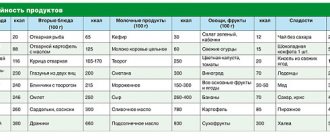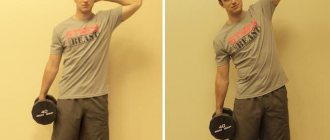- MixSport
- Blog
105143
49951
1
5
08.05.2019
https://www.pazartesibasliyorum.com
In order not to get confused among the variety of fitness areas, you need to clearly know your goals: lose weight, make your body more prominent, or increase strength and endurance.
In order not to get confused among the variety of fitness areas, you need to clearly know your goals: lose weight, make your body more prominent, or increase strength and endurance.
For those who want to lose weight and burn fat effectively, we talk about the principle of operation of different fitness workouts and how many calories you can burn in one session.
Unregulated energy consumption
In addition to the fact that you are actively involved in fitness (I assume that this is exactly what you do), you first of all breathe, spend energy on digesting food, your heart pumps blood, the processes of anabolism and catabolism occur every second inside your cells, etc. . All these processes relate to unregulated daily energy consumption, i.e. costs that are absolutely out of your control . To determine how many calories you need to consume per day to meet unregulated energy expenditure, you need to calculate your basal metabolic rate. In the article How to calculate calorie intake based on your workouts? I described in detail how this can be done. There are several formulas and calculation methods. They all give approximate values , none of the formulas will show you the exact value of your basal metabolic rate, since they do not take into account individual diseases, the state of the hormonal system, pancreas and other organs and systems, so take these values approximately, having in stock plus or minus 100-150 kcal.
The easiest way to find out your OOV:
OOV = 1 kkl x weight in kg x 24.
Next come more complex calculations using the formulas:
Harris-Benedict:
- For men: GV = 66 + [13.7 x weight (kg)] + [5 x height (cm)] - [6.76 x age (years)]
- For women: GV = 655 + [9.6 x weight (kg)] + [1.8 x height (cm)] - [4.7 x age (years)]
Mifflin - St. George:
- For men: GV = [9.99 x weight (kg)] + [6.25 x height (cm)] - [4.92 x age (years)] + 5
- For women: GV = [9.99 x weight (kg)] + [6.25 x height (cm)] - [4.92 x age (years)] - 161
Ketch-McArdle:
TBV = 370 + (21.6 x LBM) Where LBM = [weight (kg) x (100 - %fat)]/100
So, with unregulated energy costs, I hope everything is clear and understandable. Your OEV is a value below which it is absolutely impossible to lower , with rare exceptions, when this can be done under the strict supervision of doctors/trainers dealing with highly obese people or those with rare specific diseases. But even then, the drop below the ROB is carried out for a short period of time with further CORRECT exit from the diet.
Now let's move on to regulated energy costs.
Adjustable energy consumption
During the day, we don’t just lie motionless and breathe, but also go to work, do fitness, cook, take care of our husband/children, etc. We also need energy for all this. And in order to find out how many calories you need to consume per day in order for your body to function normally (without failures) and for your weight to remain unchanged, you need to multiply the obtained BER value (see the previous paragraph) by your activity coefficient.
-Low (sedentary lifestyle) - 1.2 -Low (light workouts 1-3 times a week) - 1.38 -Intense workouts 4-5 times a week - 1.55 -Daily workouts - 1.64 -Daily intense workouts or training 2 times a day – 1.73 - Heavy physical work or intense training 2 times a day – 1.9
So, you will find out your daily calorie intake (DCR), which will not help you lose weight, but will help you be healthy and stay at your current weight.
But most of you, as my intuition tells me, do not want to know this. Yes, yes, I remember the name of the article, but in order to find out how many calories are burned during training , I could not help but tell you about all of the above. You must understand that the CORRECT calorie DEFICIT/SURPLUS is achieved through complex mathematical calculations, and is not simply invented “out of the blue,” as numerous public groups and communities on “proper nutrition” do on social networks.
How to calculate the correct calorie deficit for weight loss?
To find out how much you need to reduce the calorie content of your daily diet, taking into account your regulated expenses, you should subtract 200-500 kcal per day from the DCR. Where do these numbers come from?
Through complex arithmetic calculations, it can be calculated that 1 kg of fat is equivalent to 7000-7500 calories . That is, to burn 1 kg of fat you need to burn 7000 kcal more than you consume . Quite a lot, isn't it? And to lose 500 g of weight, you need to burn 3500 kcal. In principle, for a week this figure is quite reasonable, and half a kilogram per week is a good result if we are talking about burning FAT, and not muscle tissue, draining water and removing excess toxins (burning half a kilogram of fat is much more difficult than going to the toilet a couple of times and get rid of excess “cargo”).
It turns out that in order to lose 500 g of weight in a week, you need to create a deficit of 500 kcal per day. Whether it is a lot or a little, it depends on each individual case. For some, these 500 kcal can be completely “removed” from the diet, but for others, a deficit of 500 kcal must be created solely through training, since their daily caloric intake does not allow them to drop so low.
- How to quickly lose 5 kg in a week? Myths and reality (Part 1)
And that’s why it’s so IMPORTANT to know how many calories are burned during a particular type of training. This will help you determine for yourself how long you need to exercise, what type of training is best for your goals, and how often per week you need to train.
Well, we finally get to the most important question: how many calories can you burn while playing sports?
Important rules for effective fat burning
Training is training, but we must not forget about the other two basic principles of effective body building. Of course, this is nutrition and recovery (rest).
Don’t listen if someone tells you that if you do CrossFit and eat everything, everything will burn. It is impossible to lose weight with a calorie surplus.
Healthy eating
Of course, the topic of healthy eating when doing CrossFit for girls who want to lose weight is a separate and very voluminous topic. Let's go over it in detail:
- The most important thing is a daily calorie deficit . Calculate your daily requirement using special formulas. Next, subtract 15-20% from it and you will get calories for weight loss. It is no longer possible to create a deficit; the efficiency will be lower.
- Reduce your calorie intake gradually from your normal diet. There is no need for sudden changes in either training or nutrition. For example, if you consumed 2500 kcal, and now you need to switch to 1500, do this in 2-3 stages (weekly), and do not immediately cut off your diet by 1000 calories.
- Set up the right diet - small portions, but many times a day. Ideally 5 times a day. But no less than three! Eating after 6 pm is not only possible, but also necessary.
- Keep track of what foods you eat at what time of day. Carbohydrates should predominate in the first half of the day, proteins in the second. This requirement is not mandatory, but it is advisable to comply. The fact is that with a daily calorie deficit, you will lose weight in any case, even if you eat carbohydrates at night. But in this case, you simply will have little energy for work/study and, most importantly, for training. This is why it is better to eat complex carbohydrates in the morning and before training a couple of hours. If in the morning nothing gets into you, it’s okay. This is only a recommendation, not an ironclad rule.
- Food quality. The diet should be balanced and include everything you need - animal proteins (1.5-2 g per kg of weight), complex carbohydrates (1-2 g per kg of weight), unsaturated fats (0.8-1 g per kg of weight), fiber , vitamins, etc. Do not forget to drink clean water - approximately 33-35 ml per kg of weight per day.
Recovery
Let's get back to sports. In addition to effective training and proper nutrition, it is very important to allow your body to recover . Feel your body - you don’t need to push yourself like a racehorse with all your strength. Maintain a harmonious balance between training and rest:
- For trained athletes, we recommend training 3-4 times a week.
- For beginners, 2-3 times will be enough. You can start with two classes and train like this for at least the first month, and then switch to a regime of 3 training sessions per week - every other day.
Sleep is very important - at least 8 hours a day.
How many calories are burned during strength training in the gym?
Strength training in the gym is a fairly energy-intensive form of training, this is due to the fact that lifting weights activates a powerful hormonal response in the body, which triggers the processes of fat burning and/or muscle building within 24-36 hours after the workout itself. In the article Aerobics for weight loss, I described in great detail the mechanism of fat burning during aerobic exercise, as well as during strength and intensive training, so if you want to study this topic more deeply and understand why strength training is much more effective than cardio, then I advise you to read this article. In short, know that weight training will help you not only burn fat, but also speed up your metabolism by 15-20% and get rid of cellulite.
On average, working out in the gym allows you to burn from 7 to 9 calories per minute . For example, if you exercise for 60 minutes, then your energy consumption will be 360-540 kcal. Of course, I would like more accurate numbers, and you can find out how many calories are burned in an hour of exercise in the gym
There you just need to enter your weight and the amount of time you train.
For example, a girl weighing 60 kg will burn 444 kcal (7.4 kcal per minute) in an hour at the gym, and 333 kcal in 45 minutes. This server is very easy to use, where you can also choose other types of training: jumping rope, ab crunches, water aerobics, etc.
How many calories are burned during Tabata?
Tabata training is a short 4-minute high-intensity workout that burns 13.5 kcal per minute! This is almost 2 times more than training with weights! It is the high pace of the exercises that makes this type of training MEGA energy-intensive, but its benefits do not end there! Tabata workouts are considered not only the most effective for losing weight and burning fat, but also for increasing your metabolism. If you compare training in the gym and Tabata training, the latter are in no way inferior to strength training with heavy weights. So, if you don’t have a great love for barbells, exercise machines and other iron equipment, and plus you don’t have the opportunity to devote an hour and a half to training in the gym 3-4 times a week, then Tabata training is the ideal option for you.
The disadvantage of Tabata training is that its duration cannot be more than 30 minutes; you simply physically cannot continue to maintain a high pace of exercise.
For beginners, I recommend starting with 4 minutes (one tabata) and gradually increasing the duration of your workout to 12 minutes (three tabatas). In 12 minutes you can burn about 160 kcal. It's not much, but believe me - your metabolism will be so revved up that you will continue to burn fat for another 24 hours, going about your business around the house or even just sitting in a chair.
When it comes to Tabata, it’s not so important how many calories are burned DURING the workout itself, as how many calories are burned AFTER the workout itself. The same goes for high-intensity interval training (HIIT).
CrossFit weight loss program
There is no single formula here.
This is the number of exercises, this is the number of repetitions, and this is the most effective, but everything else is not - it doesn’t work that way. The CrossFit weight loss program has a wide field for creativity. You can constantly change something. You just need to know how and what to do approximately, and roughly exchange what for what equivalents. Many people don't train correctly. Either no one wants to do fat-burning exercise, or they are lazy. People don't do cardio as well as they should if they want to burn fat. The exercises are not performed as they should be. And most often they don’t even follow the principle of the CrossFit circuit program for weight loss.
Fat-burning training - that’s actually what they say conventionally. In fact, the basis for losing your subcutaneous fat is diet (calorie deficit per day) - 80 percent of your result. And then with training you can help yourself in fat burning.
If you train purely in a strength style, it will be ineffective. You need to train so that you burn a lot of calories. Let's say in an hour. And train so that you can train often. Let’s say we train every day without serious damage to the myofibrils in the muscles, without muscle acidification. Without acidification and damage to myofibrils, you can train every day and burn calories every day. If you train in any strength style every day, you will drive yourself into overtraining.
Principles of building a CrossFit weight loss program
To prevent acidification, you need to train with light weights, the number of repetitions is far from failure.
For each exercise, allow 15-20 repetitions. And change muscle groups in circuit training so that the same muscle group does not go into subsequent exercises. This CrossFit weight loss program can be done every day. Let's start with cardio. We have a general workout, say an hour, 30 minutes of cardio. The basis of proper fat burning in cardio is interval training.
Proper cardio
For example, you are on a treadmill.
You first warm up for about five minutes at a moderate pace, then speed up for a minute and keep a high pace, which will raise, say, your heart rate to 140 beats. Then you break for two minutes and work at a moderate pace. Calm your heart rate to about 110. Then again a minute of acceleration. And so on acceleration - deceleration. And then your 30 minutes of cardio training will be much more effective than regular cardio on a treadmill, even in the area of an hour. We did half an hour of cardio, spent as many calories as possible without getting too acidic. Next come the exercises.
Crossfit training program for weight loss
Main mistakes:
Most people love to use “fancy trainers”.
All these fashionable exercise machines are low in terms of fat burning. Leg abduction/extension in the simulator, seated leg curls, various simulators of presses, rows and everything else. All this is done to simplify things, so that you can sit down with your heel and “pull the handles” without seriously thinking about anything. A true CrossFit training program for weight loss uses a large number of muscles that simultaneously stabilize and balance the body. The central nervous system should be excited to a greater extent than it does in static exercises.
The most effective CrossFit exercises for weight loss
Body balance, versatility, works all muscle groups, and you don't need a lot of equipment.
Basic equipment in CrossFit training:
- Ball
- Kettlebells
- Dumbbells
- Barbell
- Rope
Exercises:
You have a total of 5 exercises. You will perform them in a row for 8 circles with breaks of 2 minutes.
A very good exercise in CrossFit training with thrusters
.
Not a lot of weight.
Squat down and press for 15 reps. Or thrusters with kettlebells or dumbbells
. This is a very good exercise from a fat burning point of view.
Full cycle push of the barbell.
Let's also say 10 repetitions.
Or exercise
clusters.
Next with the same barbell.
Let's say right after the thrusters. Perform sumo deadlifts
with light weights.
If you worked your legs, you need to work your back.
Deadlift with kettlebells.
10-15 repetitions, or with dumbbells or a barbell.
The next exercise is bench press.
If there is a bench, press on it, no, press weights on the floor or dumbbells. You can also do without equipment. Push-ups, heavy weights are not required here. Knee push-ups, triceps push-ups, chest push-ups. 10-15 reps.
The next exercise
is the fold
.
10-15 repetitions is an example.
The variety of exercises is huge. For example, you can also use a two-weight snatch
.
A very energy-intensive exercise. Or push weights through a full cycle
.
A very good exercise is Russian swings
.
With the ball, throw over the shoulder. Throwing the ball onto a stand
.
Throwing the ball from a squat
.
Rope, parallel bars and pull-ups
Go to a CrossFit workout, lift light weights, circuit style. These exercises will allow you to burn fat much faster than static exercises in machines.
How many calories are burned during HIIT?
HIIT is also a very energy-intensive workout, but the number of calories burned during HIIT is slightly less than during Tabata, but almost the same compared to strength training in the gym.
That is, a girl weighing 60 kg will burn (for a moment) 480 kcal in an hour of training according to the HIIT principle! This is 36 kcal more from strength training.
But usually for HIIT training, 35-45 minutes are enough to give 100% and start fat burning processes in your body. In this case, the saying will be true: “more” does not mean “better”. The main thing here with intensive training is not to overdo it, so that there is no opposite effect.
To calculate how many calories are burned during HIIT according to your weight, you can again use this calorie burn server.
- HIIT training
Burn calories doing aerobics
There are many aerobics programs, so everyone can choose the right one. When choosing, consider your weight, athletic training, age and health status. For example, water aerobics is perfect for beginners. But strength exercises will require good physical fitness and muscle endurance. The types of aerobics also differ in the number of calories burned.
If your main goal is losing weight and fighting cellulite, it is better to do your best in training, becoming closer to the desired proportions.
Dance aerobics – 200-350 kcal/hour
One of the most popular destinations. Strengthens the muscles of the legs, abdominals, back and arms, tightens the buttocks, improves heart function, gives delightful posture and plasticity. Hip-hop, belly dancing, Latin American rhythms - fitness programs have already been developed based on most dances. So the choice will satisfy everyone.
Step aerobics – 250-500 kcal/hour
One of the best anti-cellulite treatments. During training, a special platform is used - step. The main goal of combining stair walking with classical aerobics is to speed up the process of burning fat. Another plus: during exercise, the muscles of the buttocks and back of the thigh, which are most often affected by cellulite, are involved, but at the same time remain passive during most other exercises. Step aerobics is also prescribed for the rehabilitation of the consequences of joint injuries, the treatment of arthritis and the prevention of osteoporosis. The number of calories burned changes with increasing load:
- During low-intensity exercise, you can talk at a normal pace without shortness of breath. 200-300 calories are burned per hour. It is unlikely that you will be able to lose weight quickly at this rate.
- With a moderate intensity load, the exercises become more energetic. You can still talk, but you noticeably lack breath. 300-400 calories are burned in an hour.
- During high-intensity exercise, you won't be able to speak a word without getting out of breath. In an hour of training you will lose up to 500 calories.
Aqua aerobics – 500-700 kcal/hour
Allows you to burn a large number of calories with minimal effort. Water resistance increases the load on the body and leads to greater energy consumption. At the same time, it is much easier to move in water, and water massage combats the appearance of cellulite. Aqua aerobics is great for people of all ages and athletic abilities, and even for pregnant women.
OUR READERS RECOMMEND
Slide aerobics – 300-500 kcal/hour
An effective way to get rid of fat folds on the waist and hips, tighten the buttocks and inner thighs, and reduce the visibility of cellulite. The classes are very intense and require good physical preparation. Beginners will first have to learn how to move correctly on a slide - a special sliding mat with sides on the sides. The exercises are similar to ice skating, and the slide was originally developed for summer training for speed skaters.
Strength aerobics – 450-550 kcal/hour
The set of exercises combines the usual aerobic and strength training aimed at breaking down fat in problem areas. During the class, you kill two birds with one stone - you get rid of excess weight and cellulite, and also train your muscles, achieving appetizing figure proportions. In addition, metabolism accelerates, and the body burns calories even after the end of the lesson.
Strip plastic – 300-500 kcal/hour
Develops flexibility and plasticity, fosters a sense of self-confidence and unprecedented sexuality. When exercising on the pole, all muscle groups are used, fat is actively burned and problem areas are tightened. It’s interesting that many people consider strip plastic surgery to be something shameful and are afraid to go to classes. This is an erroneous judgment. During the classes they do not undress, but only imitate nudity, training to do this with extraordinary charm and grace.
Capoeira – 500-700 kcal/hour
The exotic combination of elements of wrestling, acrobatics and dance is recognized as one of the most effective methods of losing weight and getting rid of cellulite. Classes train coordination of movements, plasticity, while burning an average of 10.5 calories per 1 kilogram of weight, which is more than when pumping the press.
Aerobics with fitball – 200-300 kcal/hour
Active work with a large ball trains muscles, gives good stretching and coordination of movements, and burns fat perfectly. The only drawback is that after training your appetite increases. Therefore, if you are following a diet for weight loss, control yourself, otherwise you risk not being able to resist and instantly restore the calories burned in sweat.
Pilates – 200-380 kcal/hour
A way to achieve harmony between body and mind. A set of leisurely and thoughtful exercises for the abdominal and back muscles is accompanied by breathing exercises. Classes are suitable for people of all ages and physical abilities.
Callanetics – 250-350 kcal/hour
A set of exercises for contracting and stretching muscles is named after its creator, Callan Pinkney. During the class, all muscle groups are worked, which, in addition to strengthening, become more elastic due to stretching exercises and static poses. Callanetics normalizes metabolism and develops royal posture, and also helps to lose extra pounds and reduces the signs of cellulite.
The list of aerobics areas does not end there. We briefly reviewed only some of the weight loss programs - the most common and popular. Now you can choose the one that suits you.
How many calories are burned during home strength training?
Recently, due to the large selection of free workouts on YouTube, a lot of young girls and women of different ages prefer to work out at home rather than go to a fitness club. Home training is becoming increasingly popular. My personal statistics from the Fitnessomaniya show that according to my videos, 80% of women and 20% of men are engaged in training. I make a video exclusively aimed at home training, which is why I would like to say a few words about how many calories are burned during strength training at home .
So, home strength training involves the use of at least some weights, these could be:
- dumbbells or water bottles;
— weights for legs;
- bodybar;
— fitball;
- sandbag (bag with sand).
This is not all, but the main types of sports equipment that are used for home training. Naturally, the weight of a bodybar or fitball cannot compete with the weight of a barbell in the gym, especially if you also hang a couple of pancakes on it; this must be understood and taken into account when calculating energy costs during home strength training.
So, to calculate how many calories are burned in an hour of home strength training with light weights, you need to multiply your weight in kg by a factor of 5-6.
Our girl weighing 60 kg will spend:
Calorie consumption during strength training at home (moderate intensity workout):
60 kg x 5 = 300 kcal/hour.
Calorie consumption during strength training at home (high intensity training):
60 x 6 = 360 kcal/hour
That is, by doing strength training at home, where your sports equipment is a maximum of 2 kg dumbbells or a 6 kg body bar, you can burn from 300 to 360 kcal per hour if your weight is 60 kg. Let me tell you, this is not so little, considering that cycling at a speed of 10 km/h burns about 250 kcal (4.2 kcal per 1 kg of body weight per hour).
- Are home workouts effective?
The main directions of aerobics on a stepper
Directions of step training are divided into 3 types:
- Basic step (basic) – exercises of varying intensity without complex joints and turns. Aimed at high-quality completion of tasks. Most often, it is chosen by beginners, who subsequently become bored during classes (they want more complex combinations and fiery step dances).
- The combined step is intended for active people with good memory for combinations of movements. Features many turns around the step. Not suitable for a beginner due to the complexity of the choreographic elements.
- Interval strength + shaping - a combination of the fast part and the power component. Use weights, dumbbells and other sports equipment
Be sure to read: Will cycling help you deal with cellulite?
To quickly achieve results, you should adhere to proper nutrition, do regular exercise, and get rid of bad habits.
How many calories are burned while jumping rope?
By jumping rope, you can burn from 7.4 to 7.7 kcal per 1 kg of weight in 60 minutes . That is, using the example of our girl weighing 60 kg, we make a simple calculation:
Calorie consumption while jumping rope =
60 x 7.7 = 462 kcal/hour.
In half an hour of cardio on a jump rope, a girl will burn 231 kcal. And if you add these burned calories to the strength training performed before, it turns out that in an hour and a half of full-fledged home training she will spend:
Energy consumption “strength training (60 minutes) + cardio on a jump rope (30 minutes)” =
300 + 231 = 531 kcal.
As you can see, home training is not as useless as many people think. If you train competently and regularly, then training at home is in no way inferior to training in the gym, especially if we are talking about losing weight. Yes, it won’t be possible to pump up big buttocks or strengthen your back at home, but removing a postpartum belly or getting rid of the ears on your thighs is quite possible, if you want to.
I hope this article helped you find out how many calories are burned during a particular type of training. Now you can independently calculate how many calories you will burn by doing 10 minutes a day using the Tabata system or jumping rope for 40 minutes. All calculations are quite simple, and if you don’t want to count anything, then an automatic server for calculating energy costs is at your service.
Sincerely yours, Janelia Skripnik!
Training programs
We have prepared two basic monthly programs for you. One based on classes without a gym, the second in one.
Let us remind you that all CrossFit training complexes are built according to the following scheme:
- Warm up for 5-10 minutes ( do not neglect it to avoid injury ).
- Basic program for 15-60 minutes.
- Slow cool down with stretching for 5-10 minutes.
An excellent set of CrossFit exercises for weight loss for girls is presented in the following videos:
Program without sports equipment for girls
The first CrossFit training program for weight loss is designed for a month and can be performed anywhere, as it does not require any hardware. This is a set of simple exercises with an emphasis on your own weight, with the mandatory inclusion of rest days, which are a mandatory part of training programs aimed at keeping the body in healthy shape.
Attention: there should be no rest between repetitions, or it should be minimal!
Week 1:
| Day 1 | You need to complete the maximum number of laps in 15 minutes:
|
| Day 2 | Rest |
| Day 3 | You need to complete the maximum number of laps in 15 minutes:
|
| Day 4 | Rest |
| Day 5 | You need to complete the maximum number of laps in 15 minutes:
|
| Day 6 | Rest |
| Day 7 | Rest |
Weeks 2, 3 and 4: repeat the exercises, increasing the total time by 5 minutes each week. That is, in the 4th week you should do exercises for 30 minutes.
Gym program for girls
The second program for a month is suitable for girls who train in the gym and want to lose excess weight. For efficiency, light weights and special exercise equipment are used.
Week 1:
| Day 1 | You need to complete 3 laps:
|
| Day 2 | Rest |
| Day 3 | You need to complete 3 laps:
|
| Day 4 | Rest |
| Day 5 | You need to complete 3 laps:
|
| Day 6 | Rest |
| Day 7 | Rest |
Weeks 2, 3 and 4: it is recommended to repeat the complexes with increasing circles, adding one each new week. It is possible to add the number of repetitions of each exercise depending on how you feel.
These complexes are suitable for girls at an entry level and do not require prior physical training. But within a month there will be a noticeable weight loss and reduction in volume (of course, subject to proper nutritional rules). Further training should be supplemented with new types of exercises and a gradual increase in loads. CrossFit complexes for weight loss can be very different, not all are limited to cardio - do not forget about the combination of both gymnastic elements and weightlifting.
© alfa27 — stock.adobe.com











